Zhang Xiao Department of Neurosurgery Xuanwu Hospital August 21, 2024, 19:01 Beijing

Yan R, Zhang X, Xu W, Li J, Sun Y, Cui S, Xu R, Li W, Jiao L, Wang T. ROS-Induced Endothelial Dysfunction in the Pathogenesis of Atherosclerosis. Aging Dis. 2024 Mar 18. doi: 10.14336/AD.2024.0309
Keywords
Oxidative stress
Atherosclerosis
Cardiovascular disease
Endothelial dysfunction
One-minute read
Atherosclerosis is a chronic inflammatory disease of the vascular system and the leading cause of cardiovascular disease worldwide. Excessive reactive oxygen species (ROS) can trigger oxidative stress, which in turn leads to endothelial dysfunction through multiple mechanisms. This process is closely related to the occurrence and development of atherosclerosis. By exploring the molecular mechanisms of oxidative stress and its potential clinical applications, we hope to find new strategies to improve endothelial dysfunction and prevent atherosclerosis, providing new ideas for the treatment of cardiovascular disease.
Imagine your blood vessels are like a highway with a smooth flow. Traffic is flowing smoothly and orderly. However, as traffic increases, more and more traffic jams appear on this highway, and traffic begins to become congested. These blockages are similar to endothelial dysfunction in the inner lining of blood vessels, which impedes the normal flow of blood. Atherosclerosis is one of the main reasons why this "traffic jam" gradually worsens and eventually leads to cardiovascular disease. Today, we will explore the role of reactive oxygen species (ROS) as the “mastermind” behind this process.
01
Abstract
Atherosclerosis is one of the leading causes of death worldwide. Understanding its pathogenesis is crucial for better management or prevention of this disease. Oxidative stress caused by excessive production of reactive oxygen species (ROS) is one of the key risk factors for atherosclerosis.
Reactive oxygen species include superoxide, oxygen-containing free radicals and peroxides, which play an important role in regulating vascular health. However, when the accumulation of reactive oxygen species exceeds the processing capacity of antioxidant enzymes in the body, oxidative stress occurs, which in turn leads to endothelial cell dysfunction. The main sources of ROS include NADPH oxidase, xanthine oxidase, nitric oxide synthase and the mitochondrial electron transport chain. These enzymes are supposed to maintain homeostasis in the body together with the antioxidant system, but in disease states their imbalance can lead to severe oxidative stress.
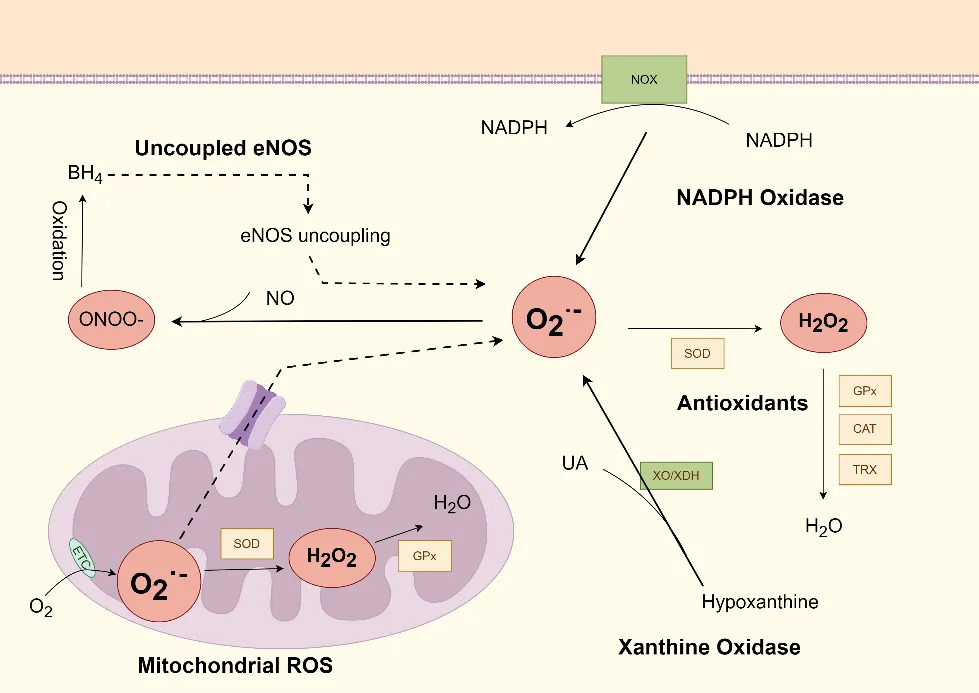
ROS production and clearance pathways in endothelial cells
A large number of studies have shown that ROS causes endothelial dysfunction through multiple mechanisms, which is a key factor in the development of atherosclerosis. This review examines the mechanisms of ROS production in endothelial cells and the pathways that regulate it. It also discusses in detail how ROS-induced endothelial cell dysfunction contributes to the progression of atherosclerosis. Particular attention is paid to the reduction in NO (i.e. nitric oxide) bioavailability, intracellular dysfunction caused by ROS, and the accumulation of ox-LDL (oxidized low-density lipoprotein) caused by ROS.
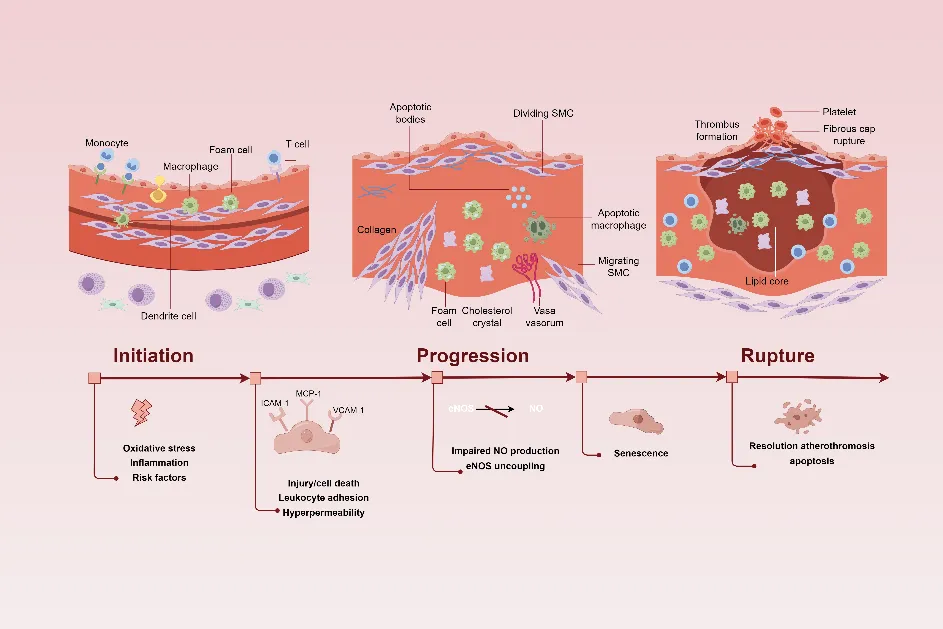
The relationship between endothelial dysfunction and atherosclerosis
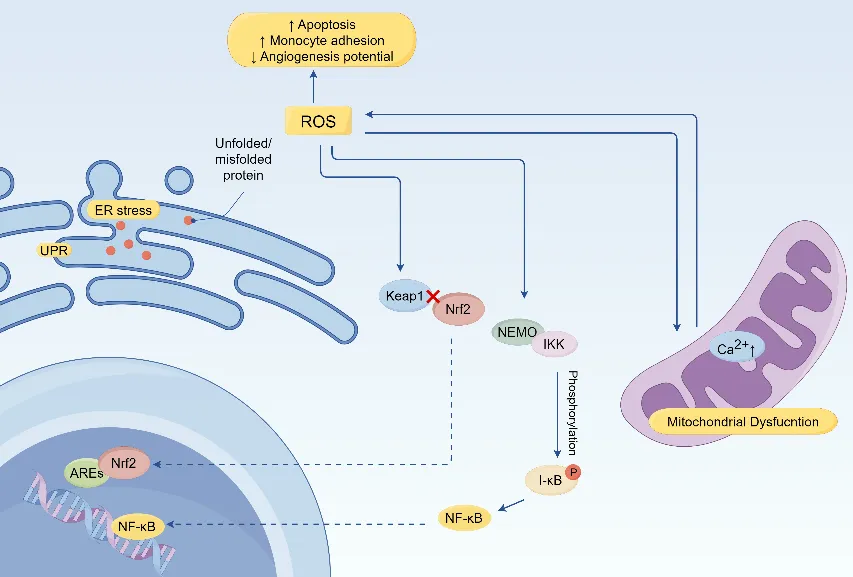
The role of reactive oxygen species (ROS) in endoplasmic reticulum stress activation and mitochondrial dysfunction
In addition, the role of lipid, protein and nucleotide oxidation products as biomarkers is reviewed. Although novel therapeutic approaches targeting oxidative stress show potential for improving cardiovascular function, the results of current clinical trials are controversial and further large-scale randomized controlled studies are needed. Future clinical studies are expected to explore more therapeutic strategies against oxidative stress, such as ROS-based nanoparticles or multi-target antioxidant treatment regimens, bringing new ideas for the prevention and treatment of atherosclerosis.
02
Conclusion
By understanding how reactive oxygen species accelerate the process of endothelial dysfunction and atherosclerosis, we have gained an important tool to repair this “highway”. Although therapeutic approaches against oxidative stress are still being explored, further research into these molecular mechanisms will provide more effective prevention and treatment strategies for cardiovascular health. In the future, we look forward to more breakthroughs, such as innovative antioxidant treatments and nanotechnology, which will open the door to a healthier future. Let us pay attention to the progress in this field and work together to address the challenges posed by atherosclerosis.
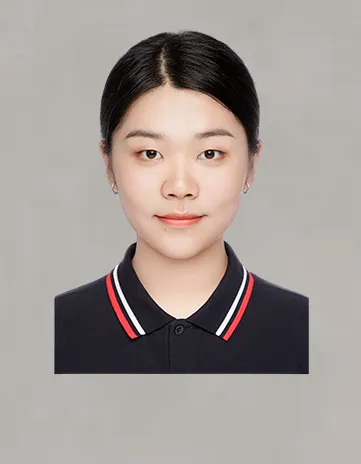
Co-first author
Yan Ruiyi
A doctoral student of 8-year clinical medicine, Class of 2019, Peking Union Medical College,
She has been awarded multiple honors, including the National Scholarship and the First-Class Comprehensive Scholarship. As the first or co-first author, she has published three SCI papers in journals such as Aging and disease, Journal of translational medicine, and BMC geriatrics. She has participated in multiple fund projects, and presided over a municipal college student innovation fund project.

Co-first author
Zhang Xiao
Xuanwu Hospital, Capital Medical University
Department of Neurosurgery Resident Neurosurgeon
He is a resident neurosurgeon, M.D., under the tutelage of Professor Jiao Liqun. He is jointly trained by Capital Medical University and the University of Oxford for a PhD. He has participated in the “13th Five-Year Plan” National Key Research and Development Program, National Natural Science Foundation of China, Beijing Municipal Science and Technology Commission and other projects. So far, he has published more than 20 SCI papers as the first/co-first author in journals such as Stroke, Ageing Research Review, Aging Dis, JNIS, TSR, and Cochrane Reviews, co-edited 2 books, and obtained 3 authorized patents.

Co-first author
Xu Wenlong
Xuanwu Hospital Capital Medical University
Department of Neurosurgery Attending Neurosurgeon
He is an attending neurosurgeon, M.D.. He graduated from China Medical University, and has worked in the Department of Neurosurgery of Xuanwu Hospital since 2016. His main area of work is surgical and interventional treatment of ischemic cerebrovascular diseases such as carotid artery stenosis, vertebral artery stenosis, intracranial artery stenosis, and Moyamoya disease.
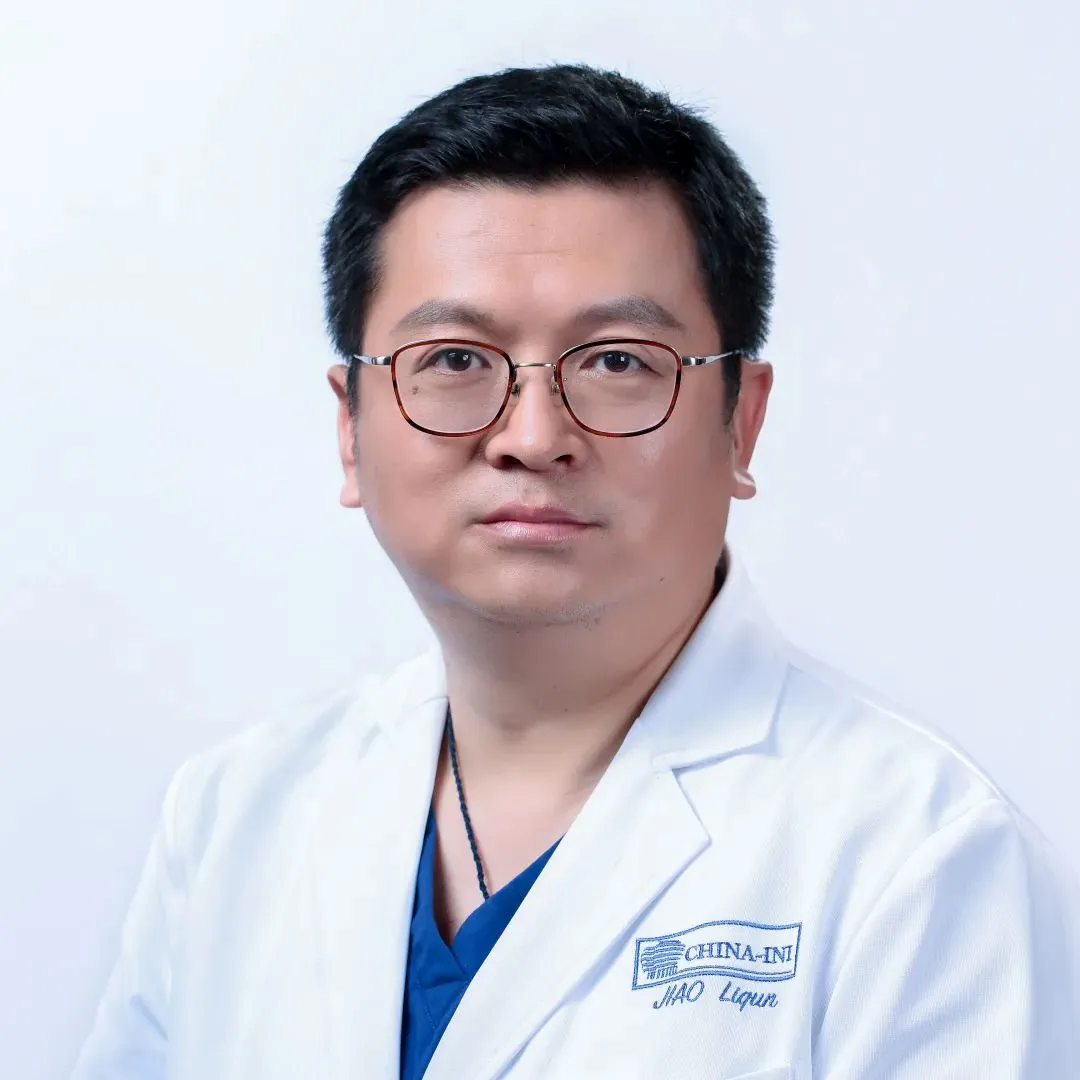
Corresponding author
Jiao Liquan
Vice President of Xuanwu Hospital, Capital Medical University
Senior Consultant Neurosurgeon, Professor, Doctoral Supervisor
He is the Vice President of Xuanwu Hospital of Capital Medical University, Director of Interventional Radiology Department, Deputy Director of the Department of Neurosurgery, Director of Cerebral Blood Flow Reconstruction Center, President of National Regional Medical Center and Xuanwu Hospital Jinan Hospital. He is also the editor-in-chief of the Chinese Journal of Cerebrovascular Diseases, deputy chairman of the Neurointerventional Committee of the Chinese Medical Doctor Association, chairman of the Neurointerventional Committee of the National Health Commission Continuing Education Center, chairman of the National Health Commission Brain Prevention Committee Ischemic Stroke Surgery Committee, deputy chairman of the National Health Commission Brain Prevention Committee Ischemic Stroke Intervention Committee, and vice president of the Beijing Interventional Medicine Association. He graduated from Shandong Medical University and successively studied under Professor Zhu Shugang and Professor Ling Feng, obtaining a master's degree and a doctorate in neurosurgery. He also completed postdoctoral research at Peking University under the guidance of Professor Bao Shengde. He specializes in the surgical and interventional treatment of ischemic cerebrovascular disease. He has pioneered innovative surgeries such as combined surgical treatment of carotid artery occlusion and vertebral artery occlusion, and drug-coated balloon treatment of vertebral artery stenosis. He has also led the Cerebrovascular Reconstruction Center of Xuanwu Hospital in in-depth research in this field. Meanwhile, he has long attached importance to education and training, and has trained a large number of highly qualified doctors in China.
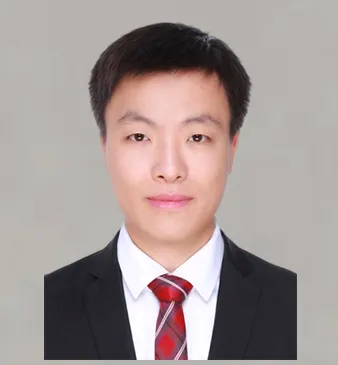
Corresponding author
Wang Tao
Department of Neurosurgery, Xuanwu Hospital, Capital Medical University
China International Neuroscience Institute
National Center for Neurological Disorders
He is M.D., Associate Researcher, doctoral Supervisor, Attending Neurosurgeon. He graduated from Peking Union Medical College (Tsinghua University School of Medicine) in 2017 with an eight-year clinical medicine degree, Beijing Science and Technology Rising Star, and young talent in the Science and Technology Think Tank of the Department of Strategic Development of the China Association for Science and Technology. He is dedicated to the diagnosis and treatment of ischemic cerebrovascular diseases such as intracranial artery stenosis, carotid artery stenosis and Moyamoya disease through surgery, intervention and complex surgery. So far, he has published more than 40 SCI papers as the first/corresponding author in journals such as JAMA, Stroke, Ageing Research Review, Aging and Disease, SVN, JNIS, Cochrane Reviews, etc., participated in the compilation of 2 books, and obtained 8 authorized patents. He has presided over 8 projects including the National Natural Science Foundation of China and the Beijing Natural Science Foundation, and participated in projects such as the 13th Five-Year National Key Research and Development Program, Beijing Municipal Science and Technology Commission, and the Yangfan Program. He is a member of the editorial board of Brain Circulation and the Chinese Journal of Cerebrovascular Diseases. He is a standing committee member and deputy secretary general of the Stroke Revascularization Committee of the China Medicine Education Association, and a member of the Neurointerventional Professional Committee of the Beijing Neuroscience Society. He is a volunteer doctor in China.
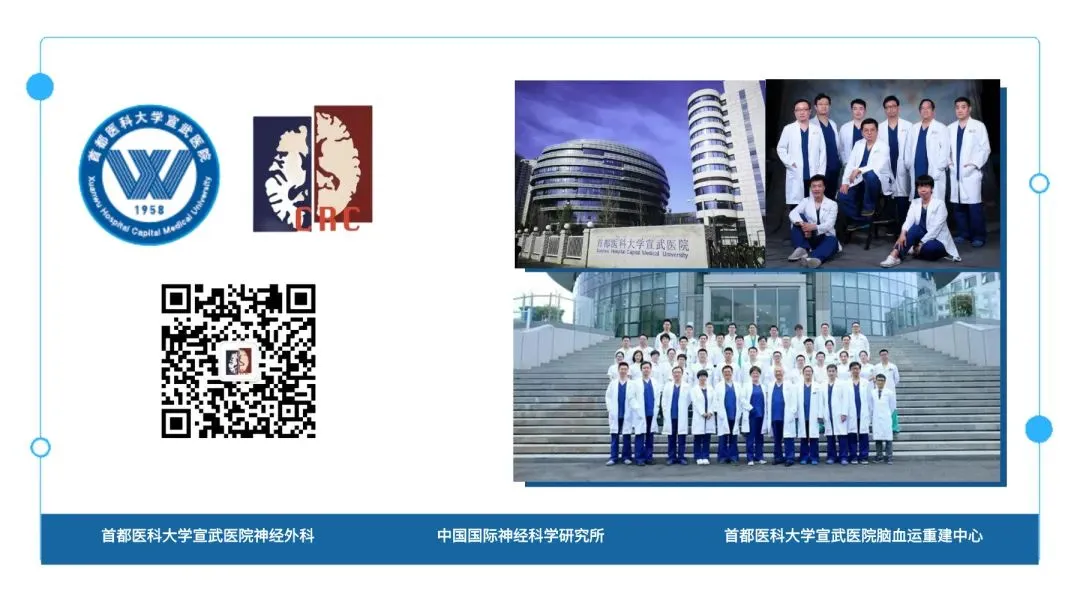
Any use of this site constitutes your agreement to the Terms and Conditions and Privacy Policy linked below.
A single copy of these materials may be reprinted for noncommercial personal use only. "China-INI," "chinaini.org" are trademarks of China International Neuroscience Institute.
© 2008-2021 China International Neuroscience Institute (China-INI). All rights reserved.